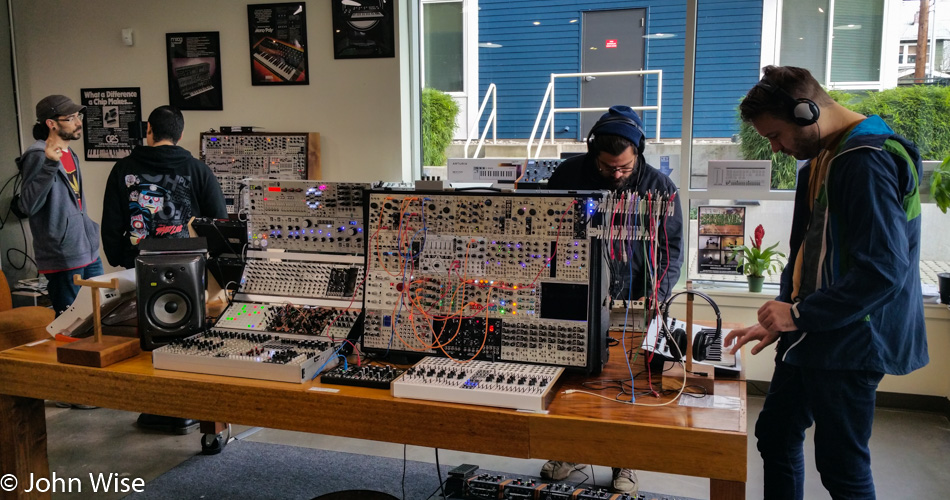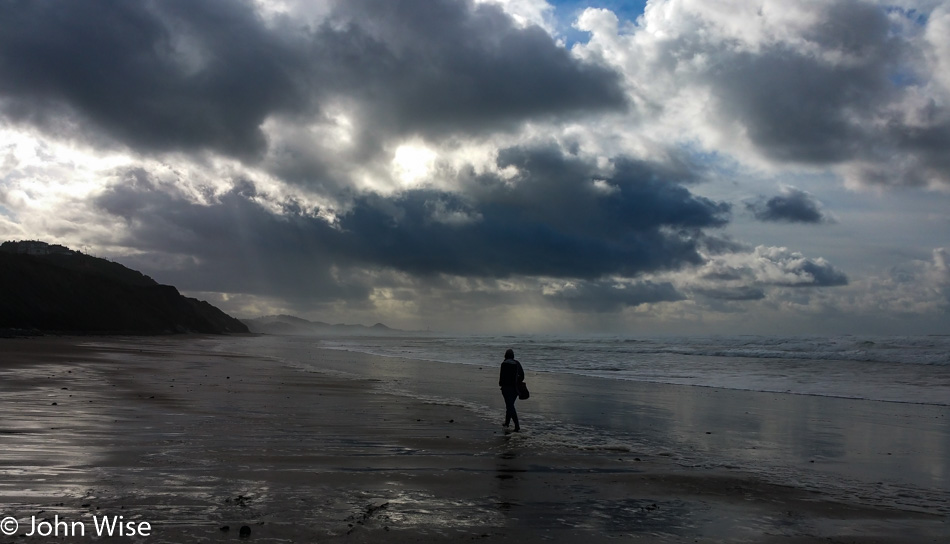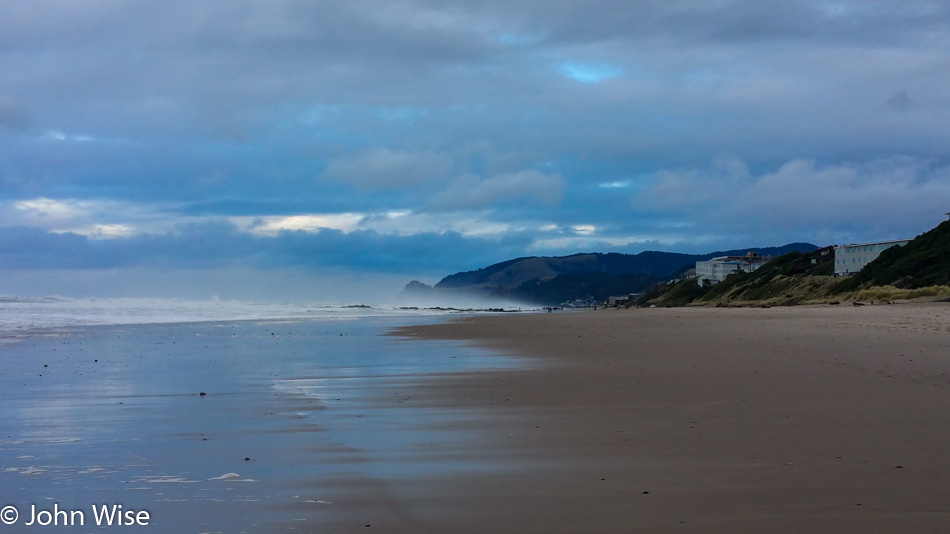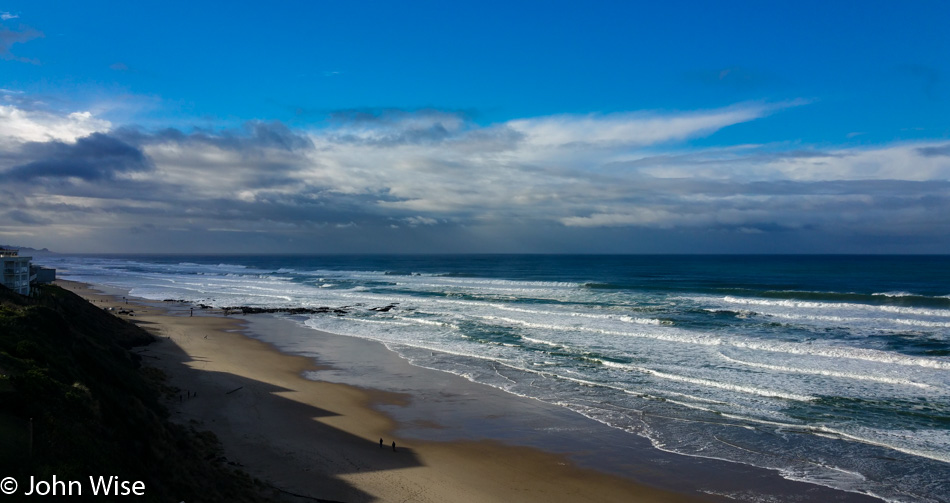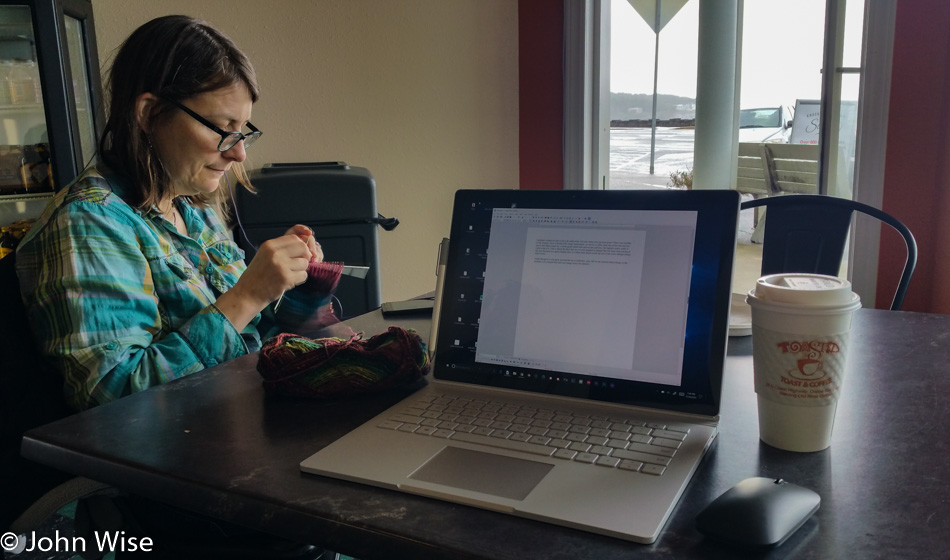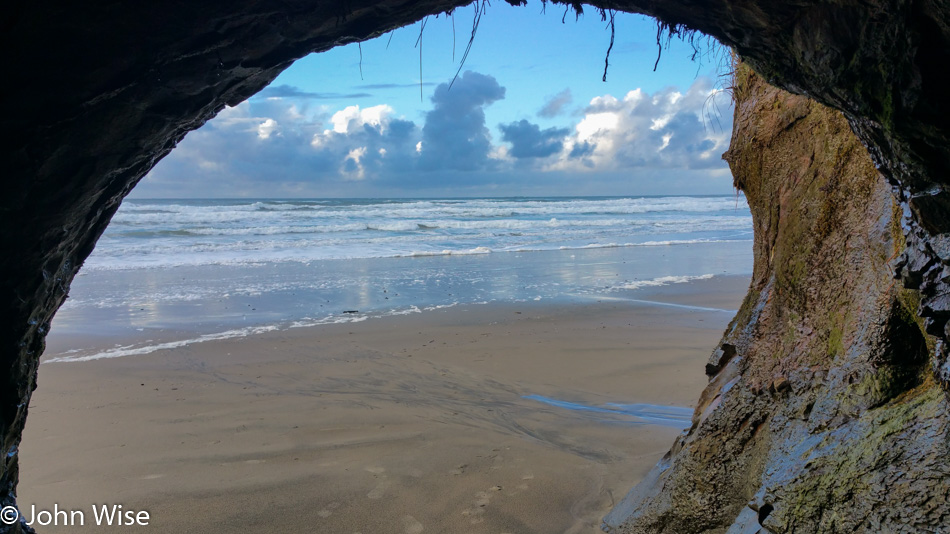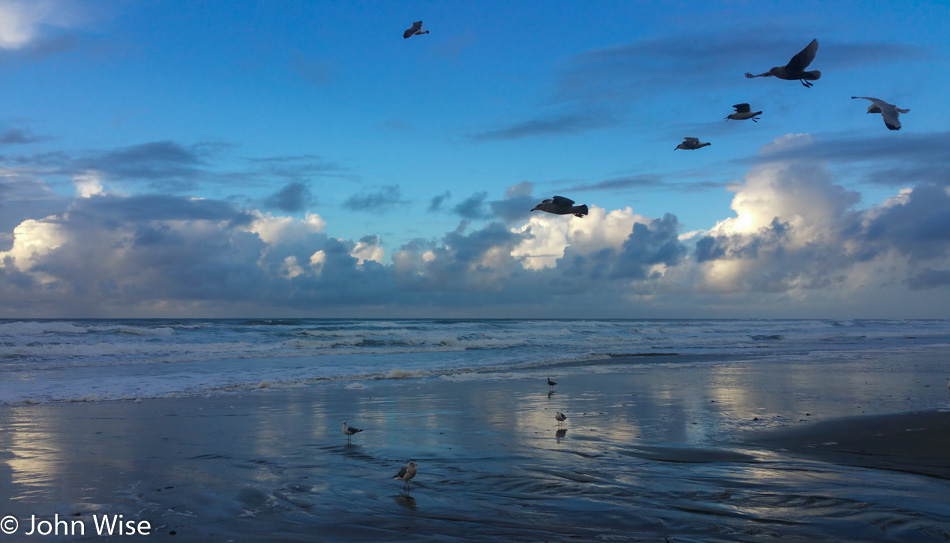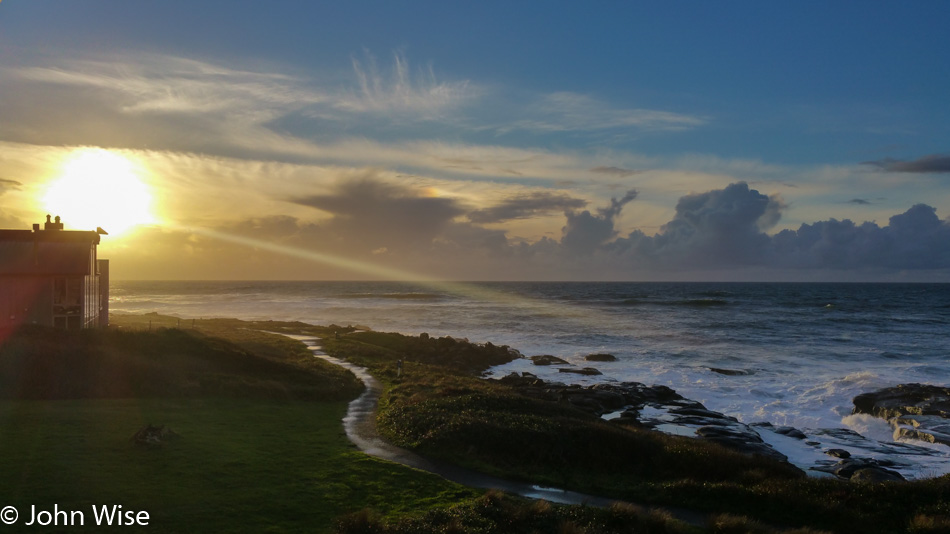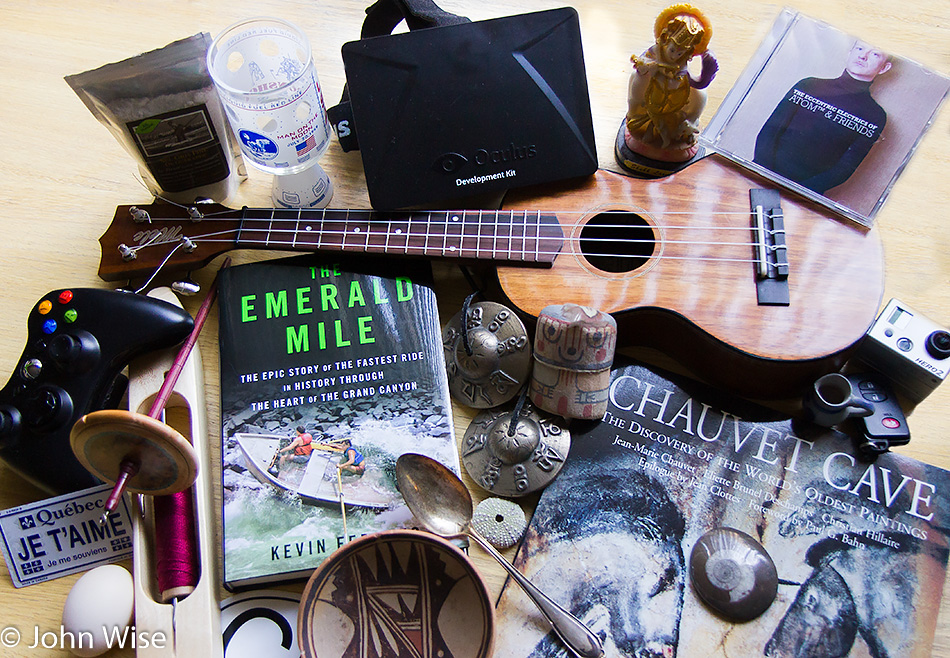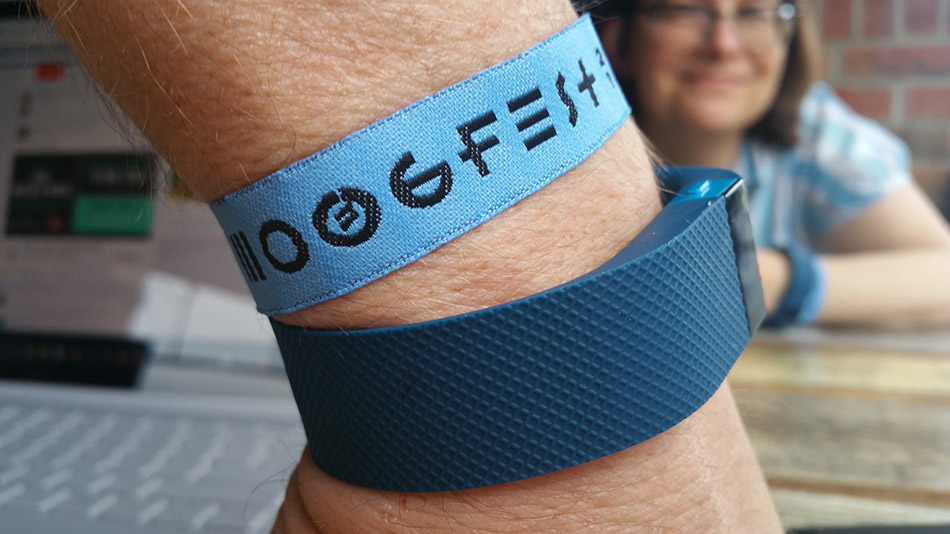
I was probably 18 when I bought my first synthesizer, a Moog Rogue, back in 1981. Whatever happened to it escapes me through the fog of extended adolescence, but I do know that life at the time was consuming me on so many other fronts that I found little time to explore the discipline of studying the making of music. What brought me the desire to make electronic noise in the first place was Industrial Music, specifically the work of Throbbing Gristle.
Fast forward thirty-five years, and Caroline and I are on our way to MoogFest 2016 in Durham, North Carolina. We are not planning to buy equipment; we are going to attend a dozen workshops and an equal number of concerts and gigs. That was until we walked into the Moog Pop-Up Factory set up just for the occasion. It is May 19th, 2016. The adventure begins.
Moog was featuring the self-contained Mother 32 semi-modular synthesizer with a discount of $100 running for the duration of the event or until they sold out. My FOMO (Fear Of Missing Out) started raging as I was certain that this deal was too good to pass up, and by the time I was done waffling, it would be gone. So I took the plunge and dropped the $499 right then and there to dip my toe once again into making car alarm sounds.
Fresh from the betrayal of my self-imposed discipline to not give into GAS (Gear Acquisition Syndrome), we head to the quirkier side of the shopping area and explore stuff that has little to no meaning to our curious eyes and ears: the real modular stuff. Earlier in the day, the organizers of MoogFest sent out an email with a link to a video from some guys out of Brno, Czech Republic, working under the name Bastl Instruments. The clip featured a beardy guy walking through the woods playing with a “Bit Ranger” and some sticks. The video was kind of corny and a bit gimmicky, but it also left an impression. Nearly right away after walking into this hall, the beardy guy is standing right in front of me; it’s Peter Edwards of Casper Electronics, who had recently joined forces with Bastl.
Sticking with the theme of being “self-contained,” I felt I could justify supporting these starving Czech engineers/artists and buying one of their Bit Rangers. With it, I wouldn’t need any other modules, and they assured me that it would play nicely with my newly acquired Mother 32 by using a simple patch cable to make the connection. I was satisfied I had everything I would need for the coming years to make audio doodles in my spare time.
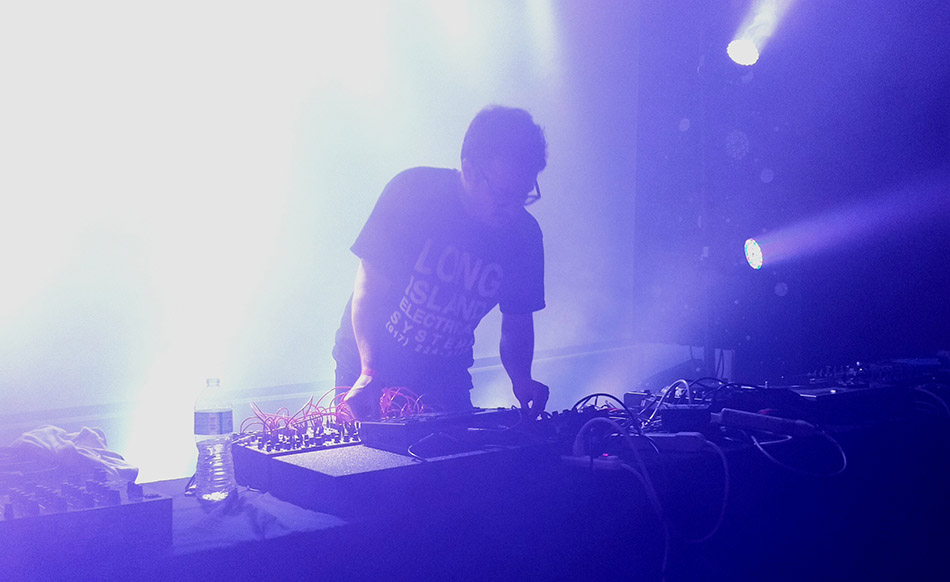
Onto the main reason, we had traveled to North Carolina: music and workshops about the future. The rest of the day passes with me not buying another thing. Friday comes around, and we are busy learning and exploring up until the early evening when we head over to see a demo by Antenes, who is making her own unique form of “Switchboard Synthesizers.” By 8:30 p.m., we are at a packed larger venue to see Grimes performing, but we’ll have to leave early if we are going to make a gig over at the Pinhook. In a small club with a capacity of just 150 people, we watched Afrikan Sciences (Eric Douglas) followed by Patricia (Max Ravitz), both on modular synth rigs. I was hooked. This was the first time in over 20 years someone made sounds that made me want to dance – modular synths in the form of Eurorack were going to be part of my future.
For those who don’t know, Eurorack was first created by Dieter Döpfer as a modular synthesizer system back in 1995. The modules were specified to be 3U in height (5.25 inches or 133.35 mm high), and their width would be measured in Horizontal Pitch (hp – 1hp is equal to 0.2 inches or 5.08 mm). These dimensions were taken from server racks that were standardized by AT&T in 1922. While 5U systems had been in existence since at least the early 1970’s they had been falling out of popularity until Dieter revitalized interest in modular systems and is still leading the way with his Doepfer brand.
Two days after I walked away with Mother 32, I was about to be snared to dive deeper by one of the exhibitors. It was Rick Burnett of Erogenous Tones who was about to play an instrumental role in my fall down the rabbit hole. Knowing I knew nothing about Eurocrack (yes, it is often referred to as that) he goes on to enthusiastically explain how my system would benefit from a second voice. I’d forgotten to tell him of the Bit Ranger as I was still seeing it more as a toy than a serious musical instrument; oh, how wrong I was! As this guy takes me under his wing he is seducing the absolute novice with magical thinking about how the keys to the modular kingdom were to be found by acquiring more gear. Armed with the facts that I simply needed another voice, an effect, a filter, and a mixer, I’d now be seriously ready to tackle the world of using modular synths to build a solid hobby.
Rick sells me his Levit8 mixer, another guy convinces me I need a Colour Palette for filters, and because you can never have enough filters, someone else sells me a WMD Aperture. By the way, this line “You can never have enough…..” is applied to everything Eurorack. Another vendor hooks me up with the Noise Engineering Loquelic Iteritas (my second voice, okay technically my third, but the Bit Ranger is not in Eurorack format). Finally, I picked up the WMD DPLR delay effect – system complete. Until I learn that I’ll also need envelopes, voltage-controlled attenuators (VCA), more effects, modulators, an interface to my computer, a mixing board, better monitors, sequencers, and a multitude of other things that promise to ensure “I’m never able again to maintain cash savings.”
With the festival over and me back in front of a computer in Phoenix, it was obvious that I’d need a case or rack to put my new acquisitions in. Researching modular cases, it was clear that this industry serving those interested in Eurorack was backlogged, and unless I wanted something off the shelf and generic, I’d be waiting a good amount of time and paying for it. My thinking was that I was building a piece of art that I would have to want to play with, fall in love with even, and that if I compromised my aesthetic sensibility, I might quickly get bored of my evolving instrument and want to move on.

It was the handcrafted work of Steffen Ahmad of WeedyWhizz in Germany that captivated my imagination of what a great Eurorack case should look like, and so on May 25, 2016, just six days after my first purchase I put in an order for a 9U/104hp case with TipTop uZeus power. The cost of a handmade red and black 21-inch wide three-row case was $999 with shipping; I was getting deeper and still didn’t know that this was just the proverbial tip of the iceberg.
Better order the patch cables today, too, as maybe the case will arrive sooner than I think. Four days later I see that I’m going to need the ability to connect my modular rig to my PC as I’ve determined that I must get Bitwig (my DAW or Digital Audio Workstation of choice) talking to my new modular system. Welcome to the world of near-instant gratification, mail-order modular components. I’d heard their names while at MoogFest, and now was my moment to establish a connection to the mother ship. First up is AnalogueHaven over in Santa Monica, California. I order the Expert Sleepers ES-3 with confidence and prove one of the first lessons the experienced wigglers try to share with the novice – learn what you have before you go in 100 different directions.
Another clarification is in order: “Wiggler” is a common term given to someone who is turning knobs in an effort to make music. There is an entire forum dedicated to this form of music called “Muffwiggler,” which certainly suggests a different vision of things. The guy who started the forum was inspired by two guitar pedals, the Big Muff Pi and the Wiggler – hence Muff Wiggler. The political correctness of the term is not the subject of this post; it is what it is, and the forum has become so instrumental in helping people from around the world with this complex subject that a world without the Muffwiggler would be a tragedy for thousands.
You can only know so much about a complex electronic instrument by reading about it or watching videos. Ultimately, you must get your hands on it and figure a few things out, such as whether the device is incompatible with your current configuration. While the ES-3 is a remarkable unit for sending control voltage (CV) signals to other modules, it requires an audio interface that can handle DC-coupled signals. DC-coupled means that capacitors that might otherwise filter certain frequencies out are left out of the design, so the full spectrum is allowed to move between devices. Typically, your home stereo doesn’t need to play very low or very high frequencies, so they are filtered out, but in modular setups, those frequencies can be key to moving signals through our system and modulating other sources. My brand new Apollo Twin Duo did not meet those criteria, and at $900, I wasn’t ready to part with it. Seeing I had a lot more to learn before hooking my DAW to my still boxed-up Eurorack components, I figured by the time I learned how this stuff works, someone else would have come up with a solution.
From calling it my Eurorack, rig, modular system, modular synth, synthesizer, gear, and probably a few other things, it is my wife who recommended a name that was going to stick. Over the previous couple of weeks, all I could talk about were my plans for this instrument. Constantly Caroline was hearing about different modules, voltages, patch cables, knobs, jacks, subtractive synthesis, sequencers, and skyrocketing costs. She told me that I should call my synth The Oscelot. She explains by way of, “How do you titillate an ocelot? You oscillate its tit a lot.” Because she foresees me oscillating the knobs a lot, she thinks it fitting for me to name my synth Oscelot – done.
June comes and goes still no word from Weedywhizz and my case. I still don’t understand how to use Mother 32, and the other pieces remain in boxes. July comes around, and I learned that almost all retailers of modular gear here in the States offer 4th of July sales. This also occurs around Black Friday, Thanksgiving, Christmas, and, on occasion, Memorial Day. Seeing how I’m going to have all this empty space in my case, I figure this might be as good a time to order as another, as the next sale might not happen until late November. At this time, I didn’t yet know the sales cycle.
July 2nd and 3rd are a flurry of insane indulgence where, after having read countless articles, forum posts, and watching a hundred or more videos, I’m ready to seriously build on being overwhelmed once my case arrives and I can finally turn this equipment on. Mind you, I’m reassuring myself that the reason I don’t know how to use the Mother 32 yet is that I need all this other gear. I’m now certifiably suffering from GAS. On order are the obligatory Mutable Instruments modules that everybody new to Eurorack must have, such as Braids, Clouds, and Warps, along with Make Noise Maths, Wogglebug, LxD, and Pressure Points. Also in the order is my first Disting from Expert Sleepers, a Buff Mult, the Verbos Multi-Envelope, Kermit from The Harvestman, and a Polaris filter from Intellijel.
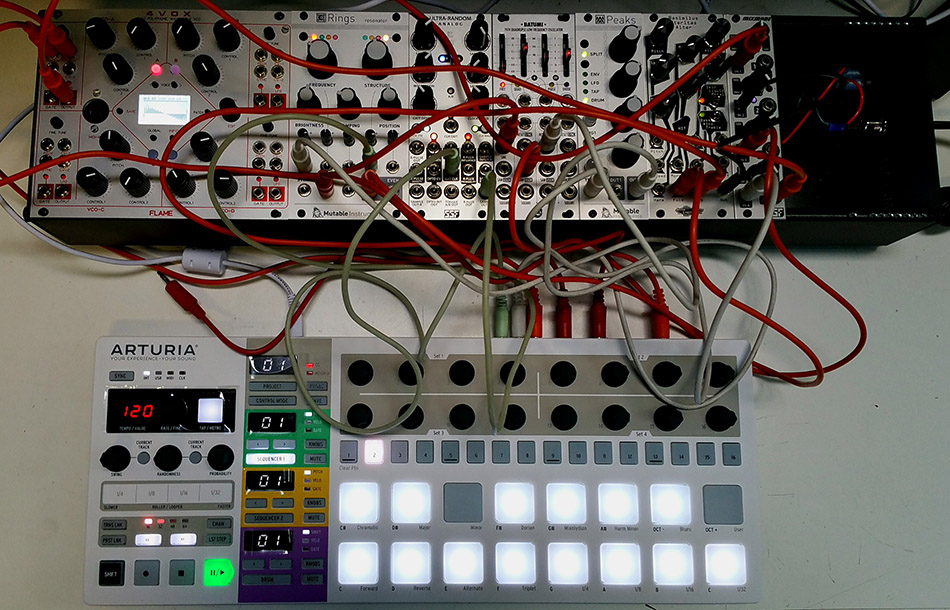
It’s Monday, July 4th in America, aka Independence Day. Steffen from Weedywhizz finally sent me my shipping confirmation; it’s my day of celebration on a whole new level now. I’m certain it will be here by Friday; it just has to be. Ten days later and nothing. I need therapy, time to buy more gear. I’m off to Los Angeles to make a pilgrimage to the temple of Eurorack – AnalogueHaven. I called Shawn Cleary a day before to schedule an appointment, and on Saturday, I walked through the door. They have everything and a lot of everything. I have no idea where to start, so Skylar offers to demo anything I have questions about.
By now, I’m wondering if my case has been lost in shipment, and with the AnalogueHaven guys being so helpful, I feel obliged to, at a minimum, buy me a skiff. Make Noise makes a powered little 3U/104hp rack commonly called a “skiff.” During my tour of the synths on display, I started to dig into the functions of the Ultra Random Analog from Steady State Fate, the polyphonic potential in the Flame 4Vox, another couple of Mutable Instruments units called Peaks and Rings, the Xaoc Batumi, which is my first LFO, another Noise Engineering module called Basimilus Iteritas Alter which is a drum unit, the Arturia BeatStep Pro sequencer with CV outs, and finally the MixMode as I won’t be able to listen to a thing tonight if I don’t have a way to mix and output sounds.
Temporarily satisfied that I have a real working modular synth system I head back to Phoenix. On Monday, it is now two weeks later and still so sign of my Oscelot case. I try not to panic. When it’s three weeks later and nothing, is that depression at the door? Then, on the very next day and two months after I placed my order, the case was delivered. It’s beautiful, and I’m entering Nirvana.
Time to gut the skiff, open boxes, and start migrating stuff into the Oscelot. This thing is huge and is certainly larger than anything I’ll ever really need, but that’s okay because I have room to grow. Or so I thought for an hour or two. Twenty-seven modules later and the writing is on the wall; I’m running out of space, but no problem, as I have the skiff to refill.
For the next two months, I tried turning on the Oscelot every day and patching something. I’m not as much interested in the idea of making a song as I am in exploring sound possibilities, so doodling in audio is just fine for me, but not for people who know me. It’s feeling like I’m being asked a few times a week if I have something to share with others yet or if I’m going to release something in the future. My retort is to ask the person if they watch TV, followed by a serious question: when was the last time they created an episode?
The fact of the matter is I’m like an infant that just inadvertently made a sound that could be construed as “mama,” and I’m told to get serious and write something on par with Moby Dick next week. I was in my 40s when I started to blog, almost 50, when I wrote a book; I’ll probably be close to 60 before I let anyone hear the bleating fart sounds being tortured out of the feral cat called Oscelot.
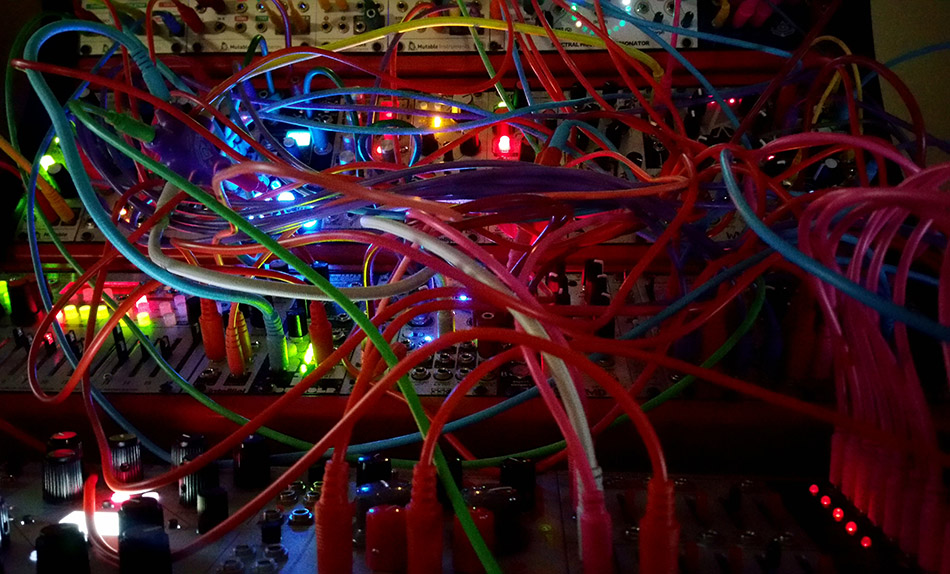
Obsession with this new hobby has gripped me hard, and in order to maximize my time with my new best friend, I drag it to the office. I stay later in the day, and I come in on Saturday and Sunday as I get to turn the volume up beyond what is civil while the crew is at work Monday through Friday. At its new residence in the office, it has another adherent, my old friend, XXXX. When I’m not on it, he is, and then on the weekend, things get kind of wacky as XXXX is a natural on the mic with the ad-libs. Add a delay to a voice, and you can talk your way into hysterics.
From that July order spree, there were still a few things that hadn’t been delivered, and it was already moving into September. These waits are normal and bring to mind a quote by Tim Churches, who was talking about a module he’s had a coding hand in called Ornament & Crime, which I feel says volumes not just about that module but about the entire modular industry. He said, “This isn’t a traditional product designed, manufactured, and sold by a single entity – it’s a post-capitalist artifact of the after-hours sharing economy, and thus mash-ups and overly complex pastiches are to be expected.” And so it is that many of the modules one might like to buy can be out of stock for extended periods of time (in some cases for years) as supplies are difficult to find or other circumstances distract the attention of a module’s creator.
Then, on September 12th, Perfect Circuit Audio notified me that the Stillson Hammer MK2 from The Harvestman had shipped and that they were expecting my Mutable Instruments Blinds to ship in a couple of weeks. Once I got the Stillson, I knew I wanted to order some drum modules, but with the extra modules, I’d soon be out of space in my case and skiff. I guess I have no choice but to reach back out to Germany.
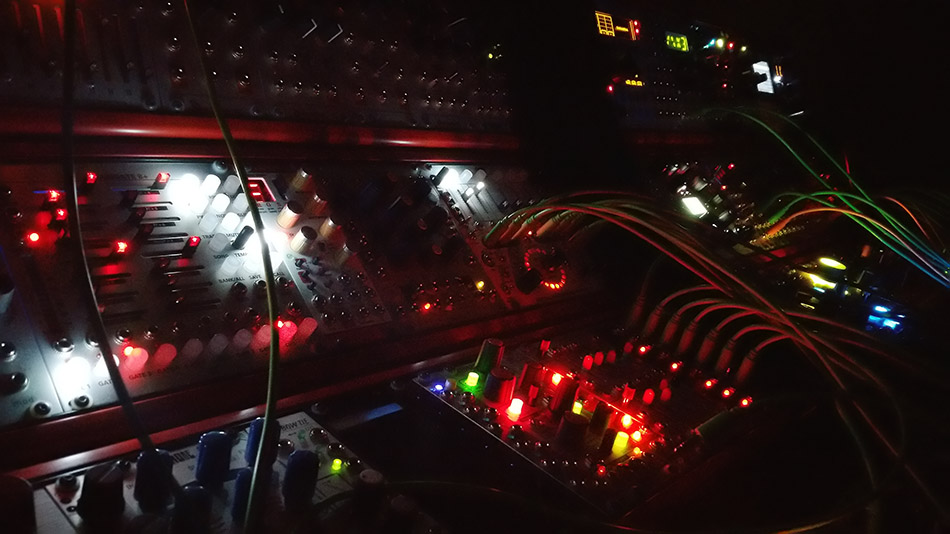
On September 27th, I placed my order with Steffen Ahmed for another red and black WeedyWhizz 9U/104hp case. This time, it cost $1,009 due to currency fluctuations; oh well, $10 wasn’t going to change this equation. The equation I refer to is the one of cost and level of investment someone is going to make who embarks on such an endeavor. People just starting out typically want to have an idea of how to budget for this stuff; the cost of cases and skiffs can be roughly calculated at a per hp price. Consider that a Make Noise powered skiff with 104hp is about $250, a Doepfer A-100PMS9 case with 504hp is $1250, and my handmade case with 312hp was $1000 you get a range of price from about $2.50 per hp to about $3.25 per hp, though if you shop around you might find something as cheap as about $1.75 per hp (ADDAC Monster case with 1,379hp).
The larger the case, though, comes with its own issues: the cost to fill it. It would be a relatively conservative rough estimate to suggest that spending $23 per hp is about what anyone would be forking out to build this type of instrument. So, a case with 3x3U rows at 104hp each would equal a total of 312hp and cost at least $7,000 to fill. A much cheaper route would be the DIY build-your-own modules way, but that’s not the path I took. To be honest, I wanted as much instant gratification as I could afford.
Knowing I have another case on the way gives me a license to start buying modules again. Next up is the Quantum Rainbow, Skorn de Bask, Make Noise Tempi and an Intellijel uVCA ordered on October 13. Over the next weeks, I order the Evaton Technologies CLX which can act as a clock and an LFO, a Make Noise Telharmonic, and the Ornament & Crime. Finally, I ordered the Folktek Matter drum/oscillator voice and a Resist for modulating it.
Uh oh, here comes Thanksgiving and another big sale. But before Caroline and I can take off for a 10-day trip in Oregon over the holiday, Oscelot 2 is delivered. Six months since I bought the Mother 32, and I’m on my way to having 728hp of capacity. It’s feeling crazy, and it will get worse before ever getting better.
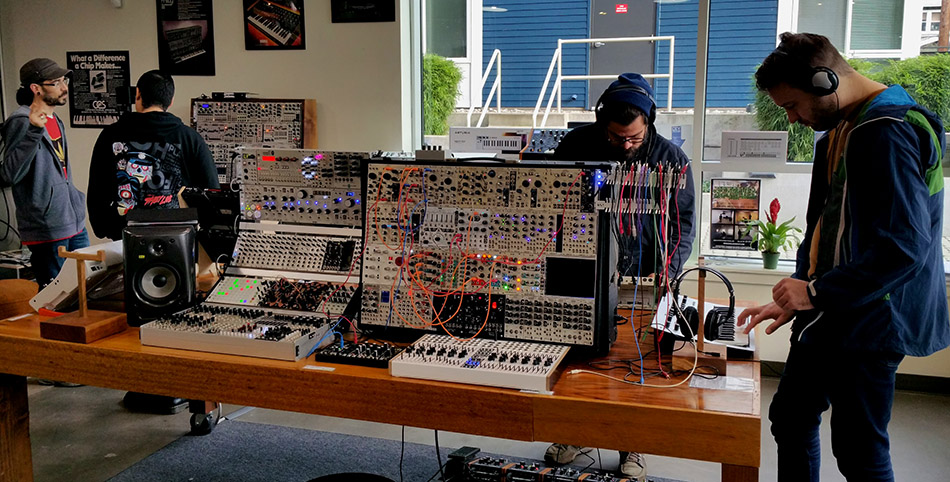
On the coast, I get the notification that the sales have begun. From AnalogueHaven, I nab six more modules the day after Thanksgiving, but my next order will happen in person on Saturday. We left the beautiful rocky Oregon coast to venture into Portland, one of the modular synth capitals of the world. I’m not sure, but I’d wager there are more manufacturers in this city than any other. With them comes an amazing synth shop nearly fully dedicated to Eurorack modules – Control Voltage.
All the while, I’ve been building my ensemble of cases I’ve been doing what many of us do when not wiggling: I’m configuring and reconfiguring my cases virtually on Modulargrid.net. So, even before you buy your first module, you can start dreaming of what you will one day own and build by dropping images into a placeholder case and then endlessly moving them around until you achieve the perfect configuration.
Knowing what I already own, what has been ordered, and what I will buy at Control Voltage, I also know I’m going to be buying a new skiff, bringing me to 832hp of modular Eurocrack addiction. At the shop, I meet Joseph, who is now working full time with 4MS, and Eusebie whom I will meet again on subsequent visits; both are incredibly helpful. Satisfaction is within my grasp and can be mine for the swipe of a card signifying I am transferring my cash to an account that allows me to consider a bunch of new modules as now being my property. Going into my carry-on bag are one 4MS VCA Matrix, a Soundmachines Lightplane, the Malekko Heavy Industries Varigate 8+, and another Intellijel Buff Mult.
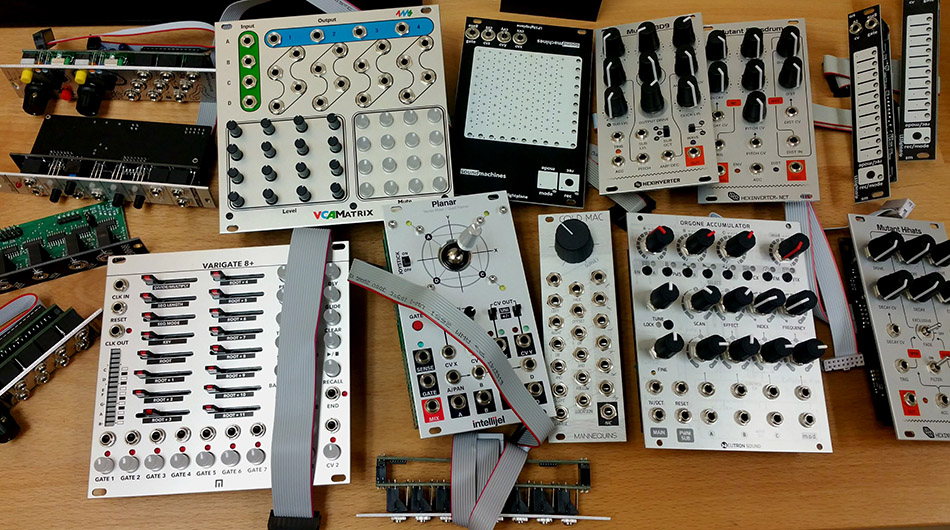
Back at home in Phoenix, I get to work rearranging my cases in the endless pursuit of finding an optimal layout that will probably remain forever elusive. In my frenzy, I ordered even more stuff; sales are hard not to get excited about when 10% off an order could save me the price of an entire module. So before I know it, I have another bunch of modules, including some Hexinverter Mutant drums, a Neutron Sound Orgone Accumulator, a couple of Soundmachines Lightstrips, the Intellijel Planar, the AntiMatter Brainseed, and a couple of modules from the incredibly entertaining Jesse McCreadie of Animodule.
Only a couple of days go by before I get an email from Brian Clarkson of Orthogonal Devices in Japan that the ER-301 Sound Computer/Sampler has been shipped to me. Back on October 31, I had read about a new very expensive module that had recently gone up for order. If it was truly a work of art and genius, if it really did all that was claimed. At nearly $900, it felt way out of my league, and I left my office dreaming about it. A friend and I were on our way to meet someone else for dinner; he was driving. We weren’t 10 minutes up the road before I pulled out my phone and slain the monster of FOMO. I punched in my PayPal info and had my unit reserved; I was winning. Good thing, too, as not long afterward, it was sold out and would remain so for almost six months.
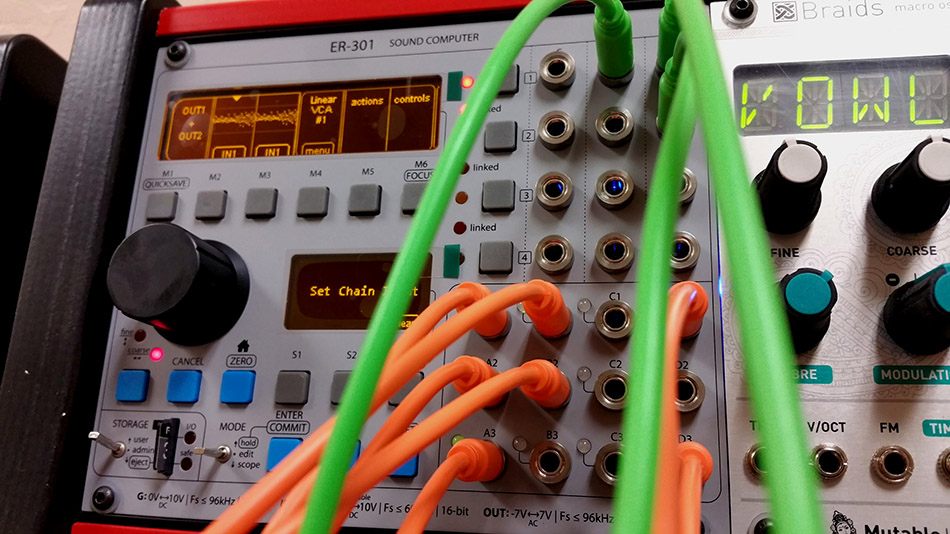
On December 7th the last module of the year arrives, the ER-301.
Years before, when I was playing with Adobe’s Premiere Pro and After Effects, I came to learn of Chris Meyer, who was offering some crack tutorials for After Effects with his wife, Trish. I signed up for Lynda.com because of them; I bought their books, and I was in love with After Effects. By 2016, they were a distant memory due to my previous two years of being immersed in my virtual reality project. Then, as I embark on this modular endeavor in one of the forums, I see the name Chris Meyer. A coincidence for sure, but no way it could be the same guy. That other Chris Meyer was a video guy, not a synthesizer nerd. After seeing his name pop up a few times on Facebook, I take a closer look and sure enough, it’s the After Effect guru himself.
Turns out he had a Learning Modular course on Lynda that I just had to sign up for, which turned out to be super helpful. He wrote a great resource on his website in the form of a glossary of modular synthesizer terms. The guy is incredible for the amount of material he shares, and I’m about to knock on that door and test just how helpful he can be.
I remembered that he’d posted an image of a damaged Eurorack case that was GIANT; as a matter of fact, it was a Monster – the ADDAC Monster case. My cases were approaching full status, and my curiosity for playing with unique modules was not subsiding. I pinged Chris and hoped he’d take a moment to answer the questions of a novice about his big boy toy. Sure enough, he answered promptly, but my knowledge of power supplies, busboards, +12V/-12V, and +5V rails is non-existent, so I’ll have to read more and ask a lot more.
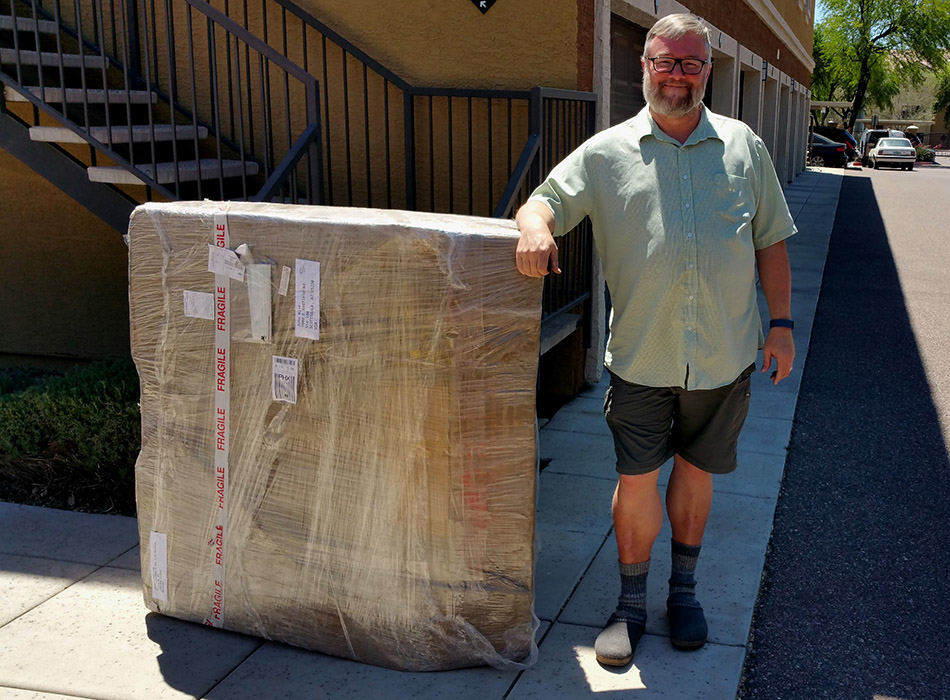
A flurry of emails between André Gonçalves of ADDAC and myself starting in late January allows me to build up the nerve to cross a serious rubicon; I’m going to order 1,379hp of new Eurorack space; I just don’t know exactly when yet. Turns out that I needed another 60 days, and then on March 25th, 2017, I wrote to André and told him to bill me. Over the next weeks, he will send me photos of the progress and how it will be packaged for shipment. Then, on May 1st, the Monster arrived; it was all mine.
By now, you know what comes next: order more gear. Again, I put orders in with AnalogueHaven, I stop at Perfect Circuit Audio on a trip to Los Angeles, I make a stop at Noisebug in Southern California on another trip over to Los Angeles, and finally, I drop in on the guys at Control Voltage in Portland again. Mail order is also in high gear, with orders coming in from Iron Ether and their Pithoprakta; a guy is selling his Benjolin, which I can’t find anywhere, so I take it. Over on Kickstarter back in February, I got the first order in and nabbed serial #1 of a giant 4-voice oscillator coming from the brilliant mind of Paul Schreiber at Synthesis Technology called the E370. At 54HP, it is enormous but doesn’t ship until the end of the year.
It took me nearly 10 hours to empty my two WeedyWhizz cases and two Make Noise skiffs and mount all the modules in the new Monster. Lucky me it’s about 10:00 pm when I first power this thing on as it lights up like a Christmas tree. I say lucky because I get to turn off all the lights and marvel at this work of art. Earlier in the day, I had already powered it on and let it sit for a while, then I powered it off and back on, cycling it quickly to make sure there weren’t any apparent anomalies. Then I plugged in a buffered mult and sniffed around, making sure nothing smelled out of the ordinary. Then, to be extra cautious, I plug in another relatively inexpensive module and fire it up again, sniff sniff….nothing.
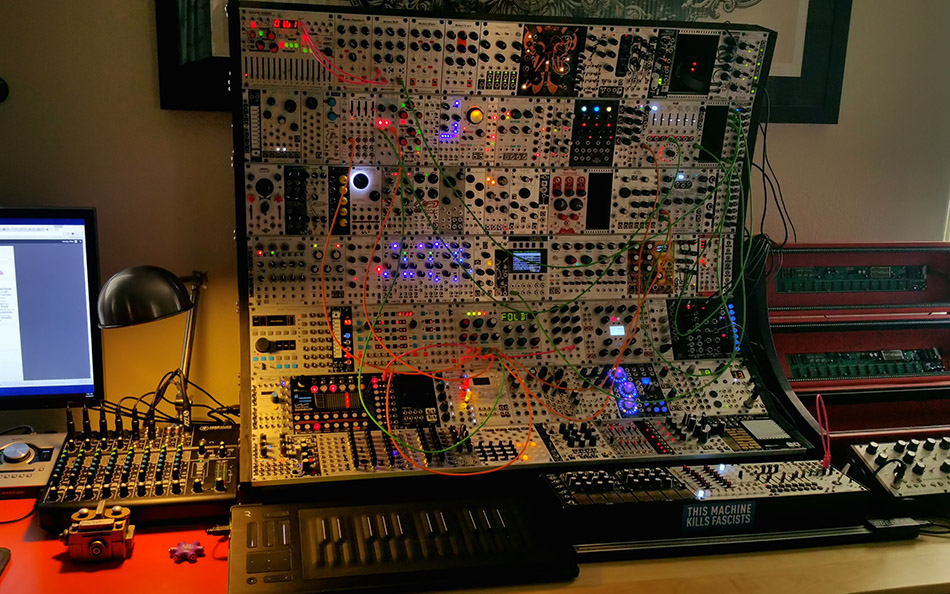
So here I am on the one-year anniversary of finding myself with a new hobby and there’s been a lot learned along the way. The age-old cliched and worn arguments of Ford vs. Chevy, Coke vs. Pepsi, PC vs. Mac, and iPhone vs. Android are alive and well in the world of modular, with the sides being Analog vs. Digital. This is inherently dumb, as who cares what creates the sounds if the music has entertainment value? Nobody cares how a catchy track is made and on what gear, they want to like what they hear. I’m nearly certain there were arguments 40,000 years ago as someone boreholes in a bone and invented the flute from others in the group who fought for banging rocks and clicking twigs vs. flutes.
It’s not impossible to teach old dogs new tricks; it just might take longer. Then again, I don’t run into many people older than 40 who are venturing into complex new trajectories where they are allowed to put their incompetence on display. My biggest impediment to springing forward is money and time. Here we are with the ability to purchase a computer capable of running artificial intelligence algorithms for about half the cost of a new car, but $10,000 is still quite a bit when your synth hobby is costing you almost four times that amount. Then there’s time: I operate a small company of about thirty people and finding free moments to teach myself about control voltages, subtractive synthesis, Euclidean rhythms, chords, measures, keys, notes, beats, midi, and mixers is already at a premium. One of my dreams is that I might have the ability, time, and equipment in retirement to dedicate myself to writing, photography, video, coding, music, reading, cooking, and, who knows, maybe even some knitting.
When one delves into modular synthesis, one will learn that this field comes with as many opinions as there are modules, now estimated in the thousands. It is often said, “Learning this can only be complicated by owning too many modules too quickly,” but how much is too fast too soon? I’m now up to 124 modules, which equates to one new module acquired every three days. I certainly have not had enough time to master even one of them. You will often read the advice to go slow and get a few modules to start and learn them in all of their intricacies and only then start adding to the collection. While this is probably valid, I find the opportunity to explore combinations of modules interfacing with other diverse units to be an exercise in sifting through the complex of infinity, where it’s simply fun to play among audio doodles that don’t require explicit function or performance qualities. Again, it need not be the goal of a hobby to impress others with your prowess but to relish in the ability to slowly increment your body of knowledge and skills.
A painter with a palette of one color will surely make something incredible once they’ve developed enough skills. I’d never argue against the idea that the cave paintings found in Chauvet made with charcoal black are astonishing glimpses of early human creativity, but the vibrancy found in Marc Chagall’s work allows us to peer into the imagination of a dream where reality is giving way to the unexpected. It is my hope that as I explore from a palette of over 120 “colors,” I may discover a new method for weaving a tapestry drawn from frequencies, beats, drones, found sound, randomness, and complexity so I may discover another aspect of my voice for altering the cultural landscape.
Ultimately, I will approach the fulcrum, both equipment and skill-wise, where the output will start to demonstrate a basic level of adaptation, allowing me to communicate to others what I’ve learned along this path. I harbor no illusions of stumbling upon something that will have anyone take notice of my efforts; on the contrary, I require this exercise in order for me to edify myself at a stage in life where I’ve witnessed many other people fall into intellectual stagnation. Growing older I’m delighting in the knowledge that I have an ability and a large interest in exploring the unexplored territory where discovery and the complex is still a magical journey.
